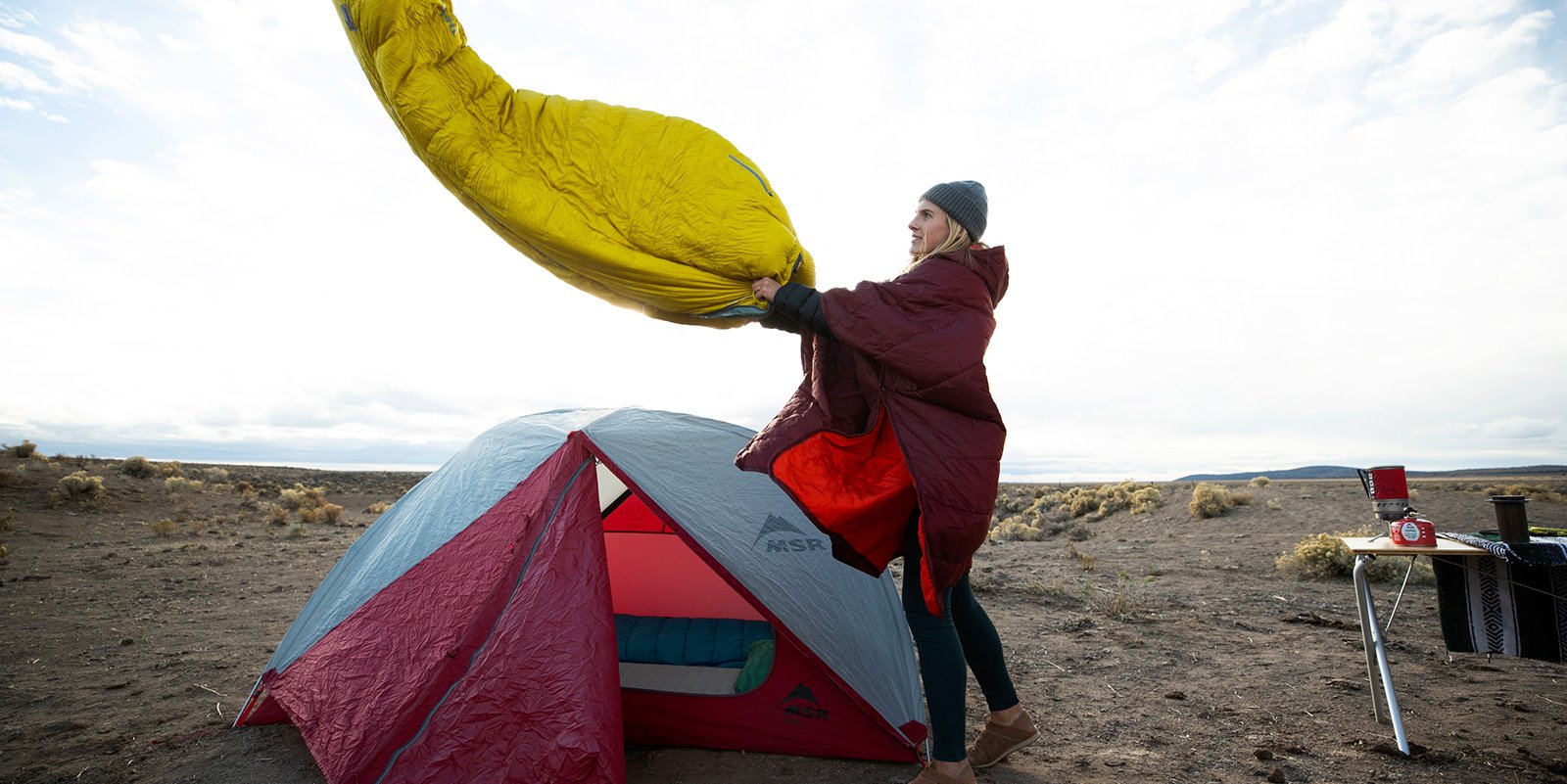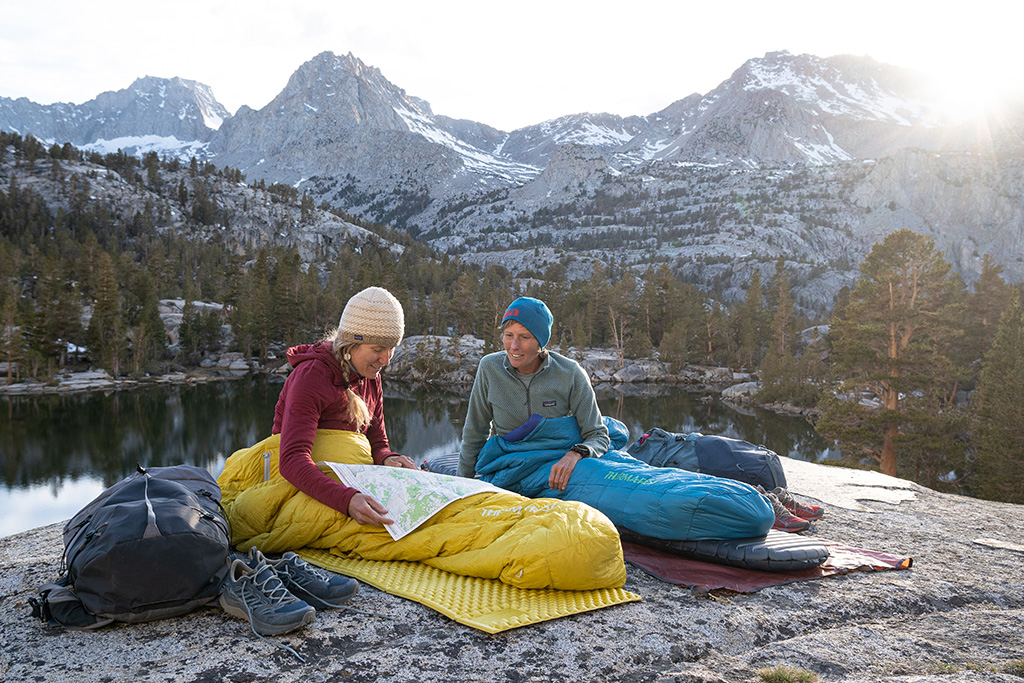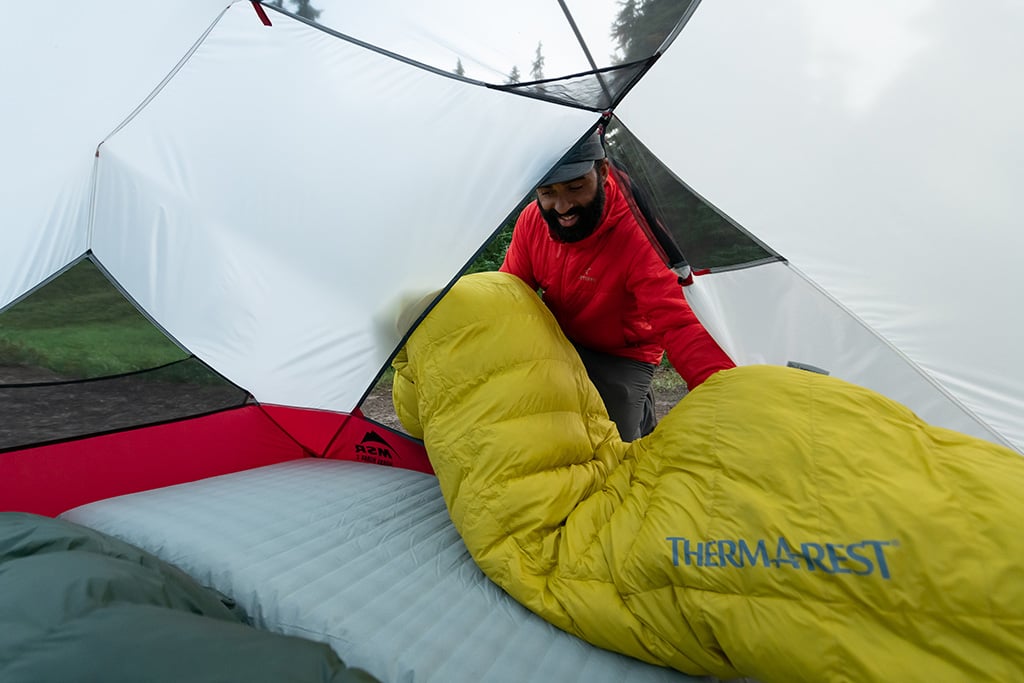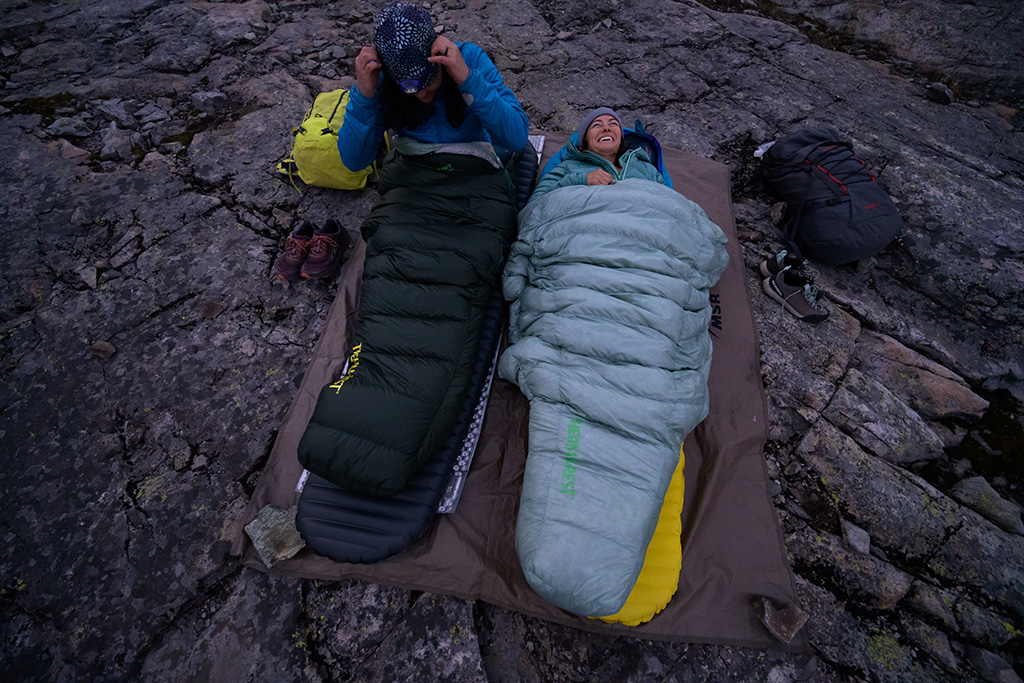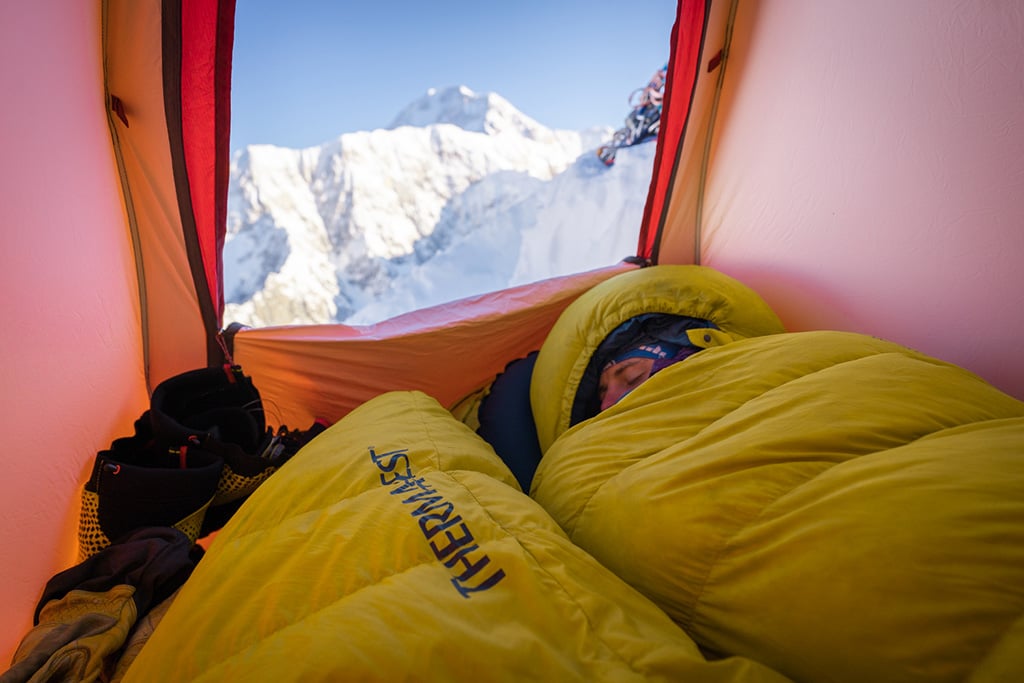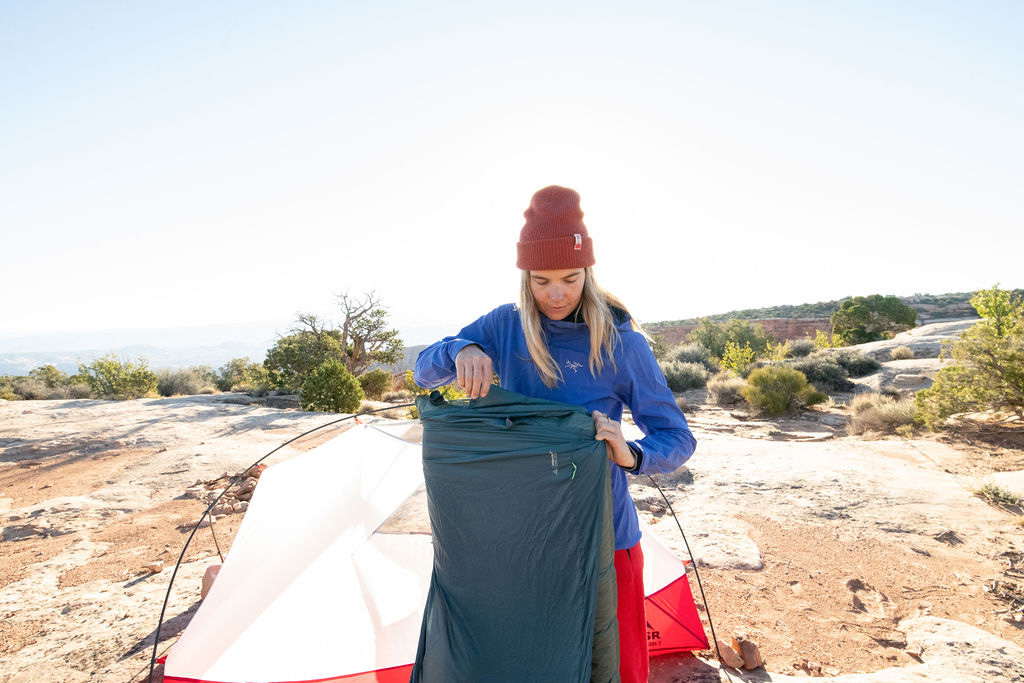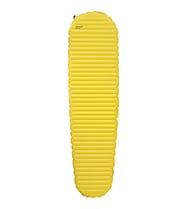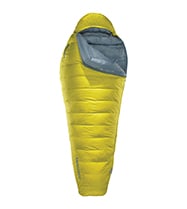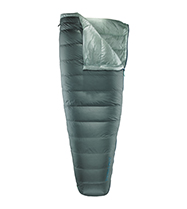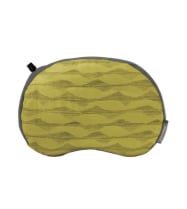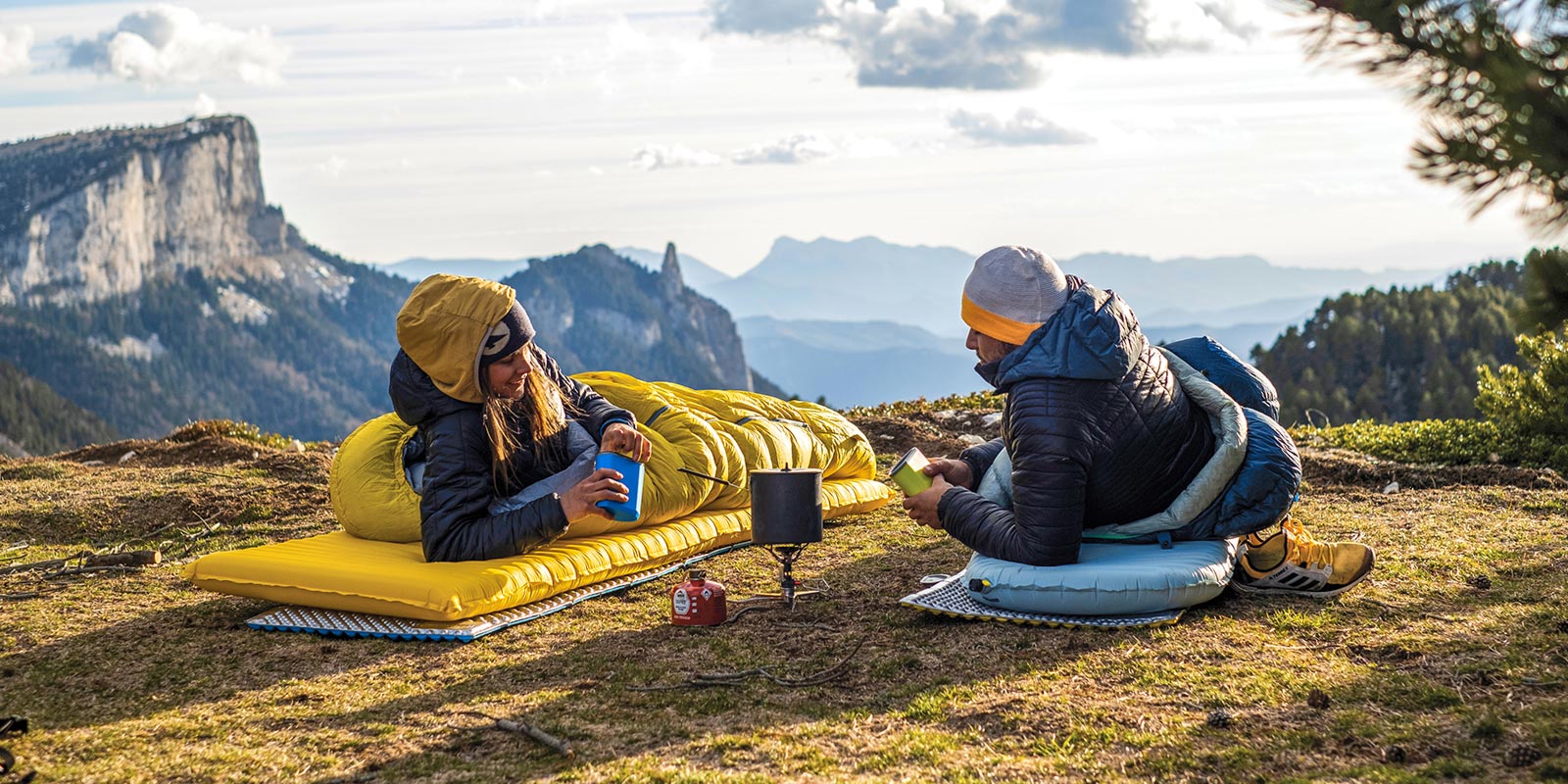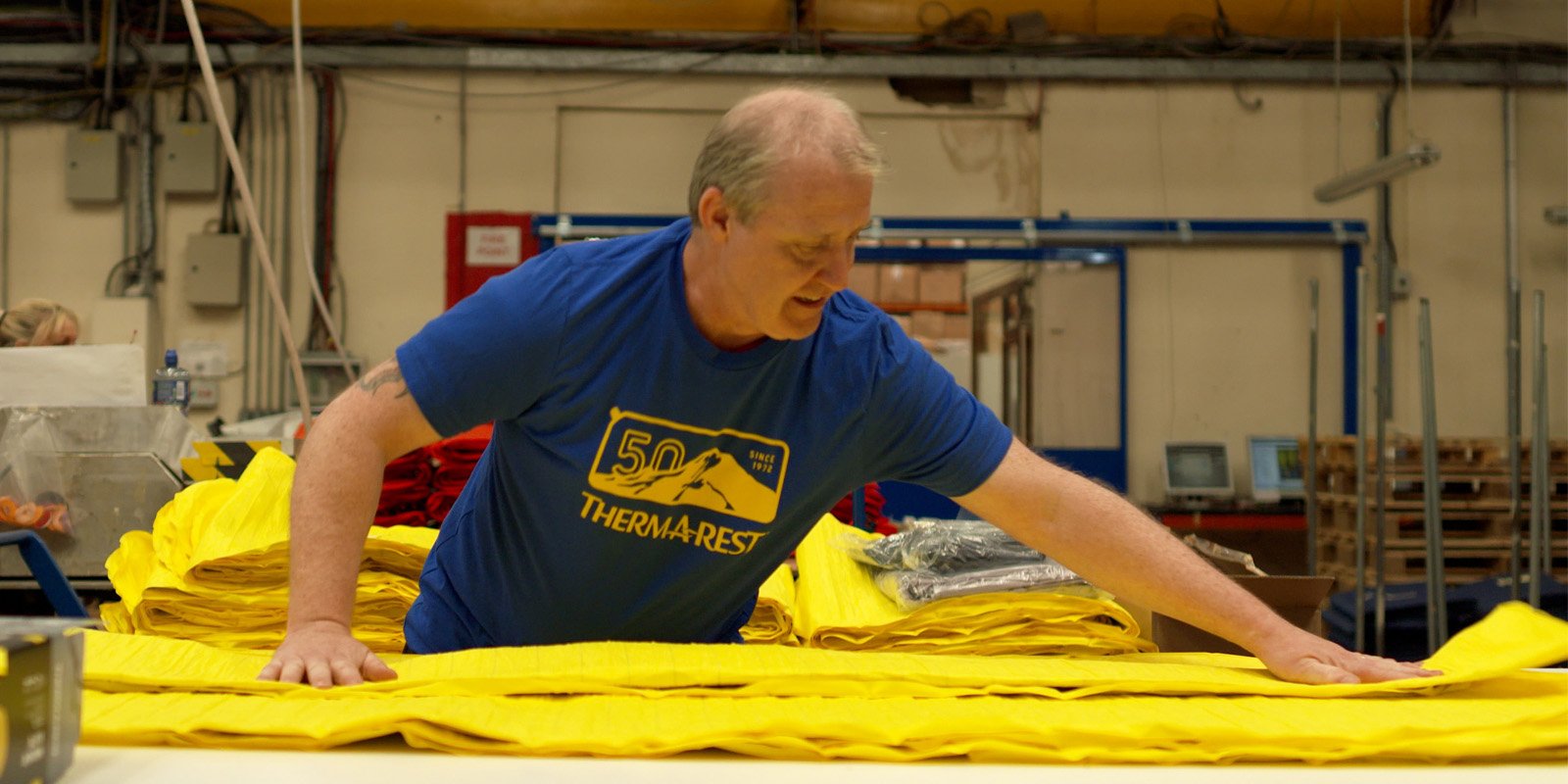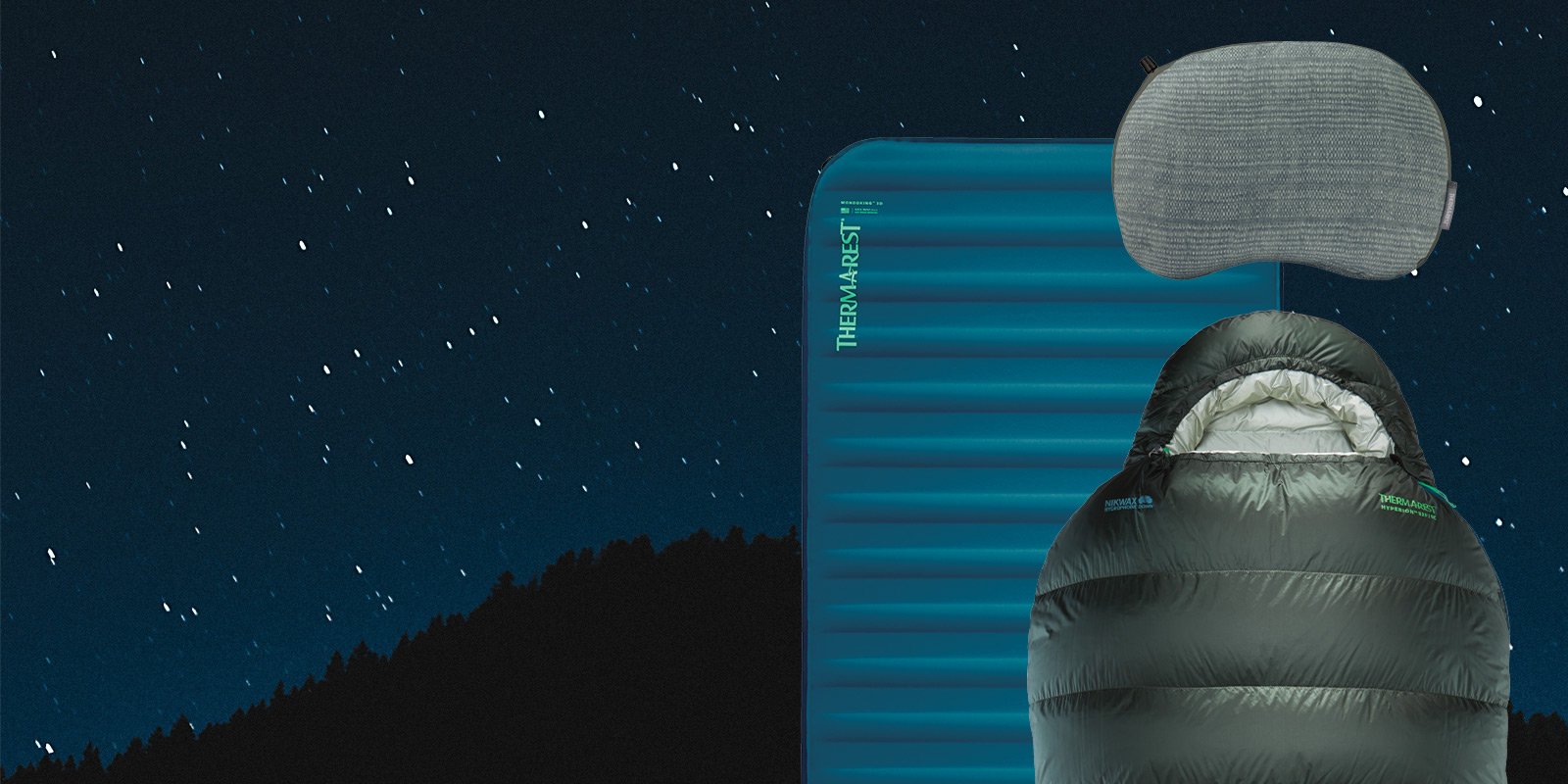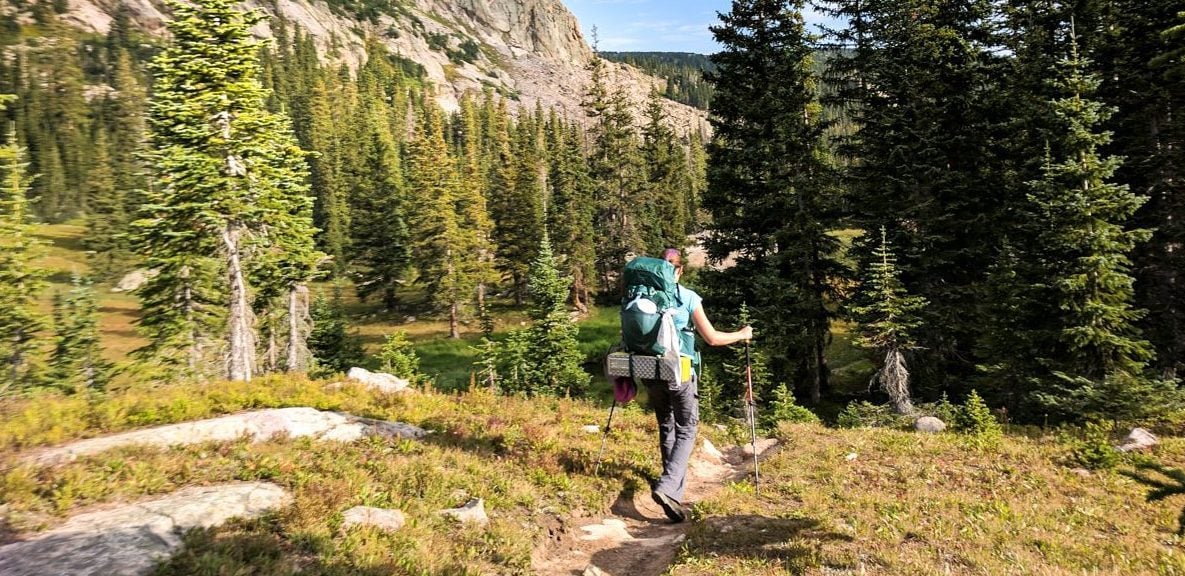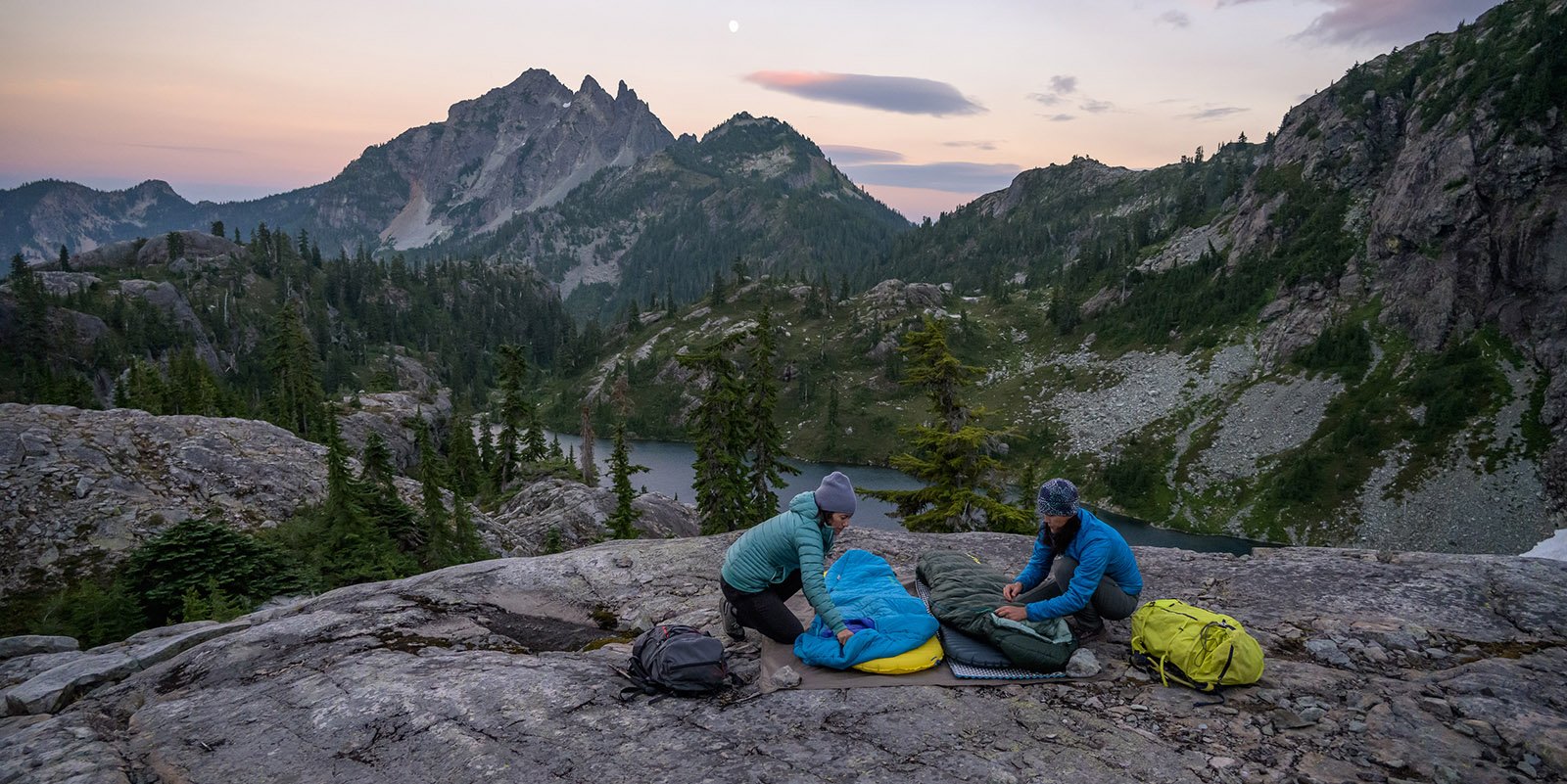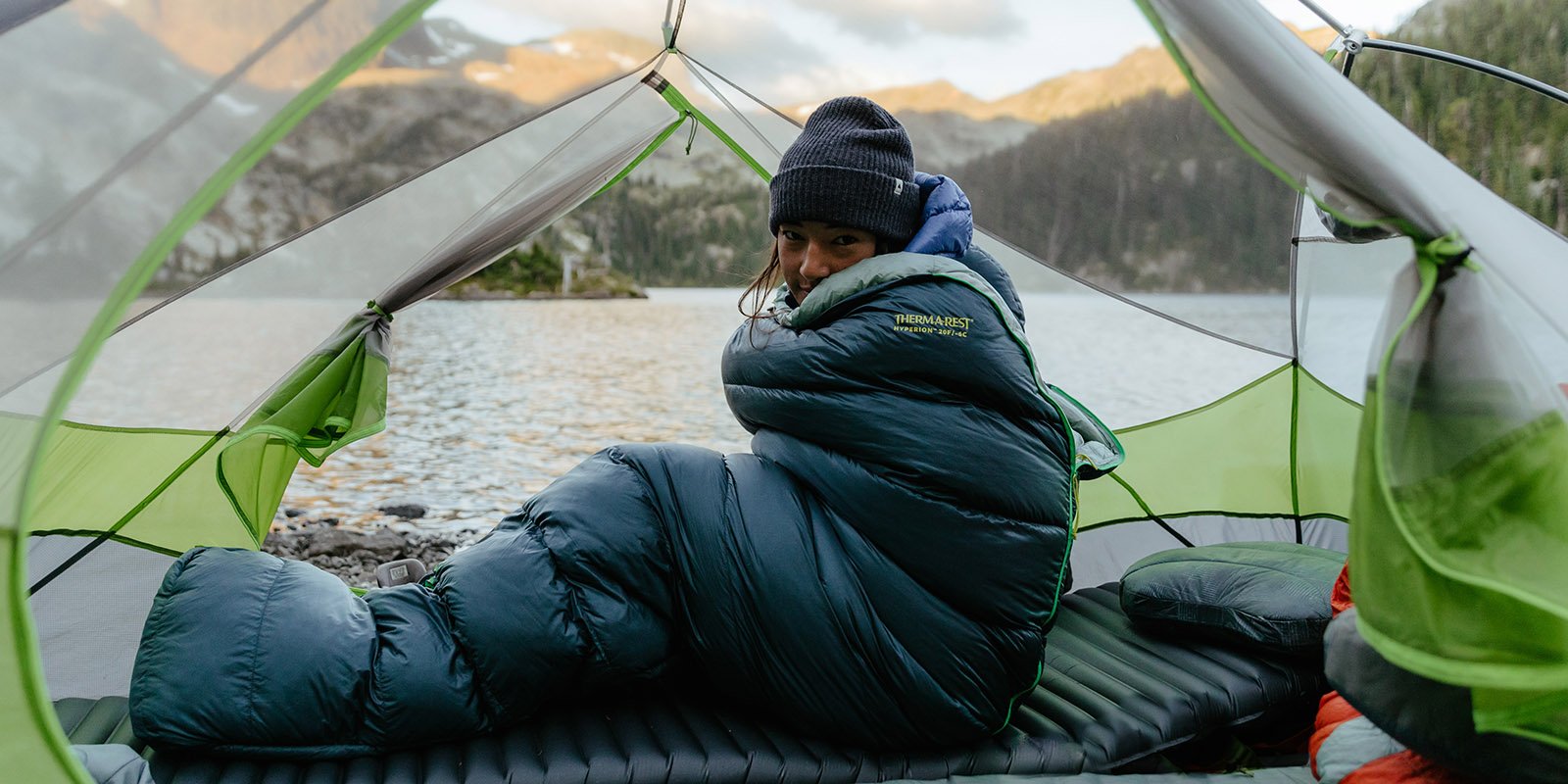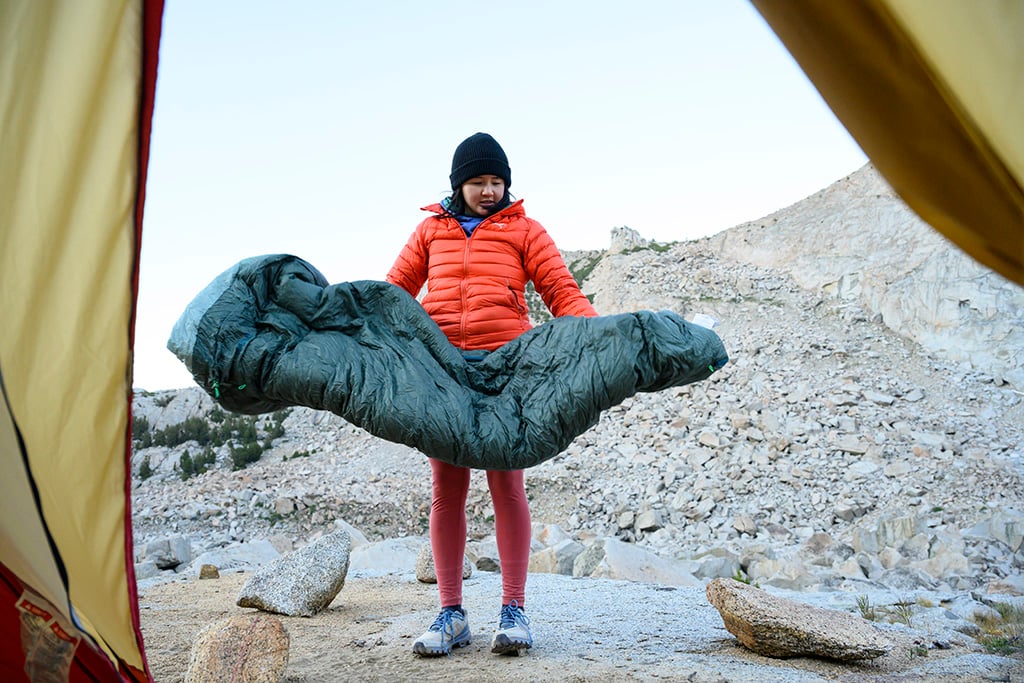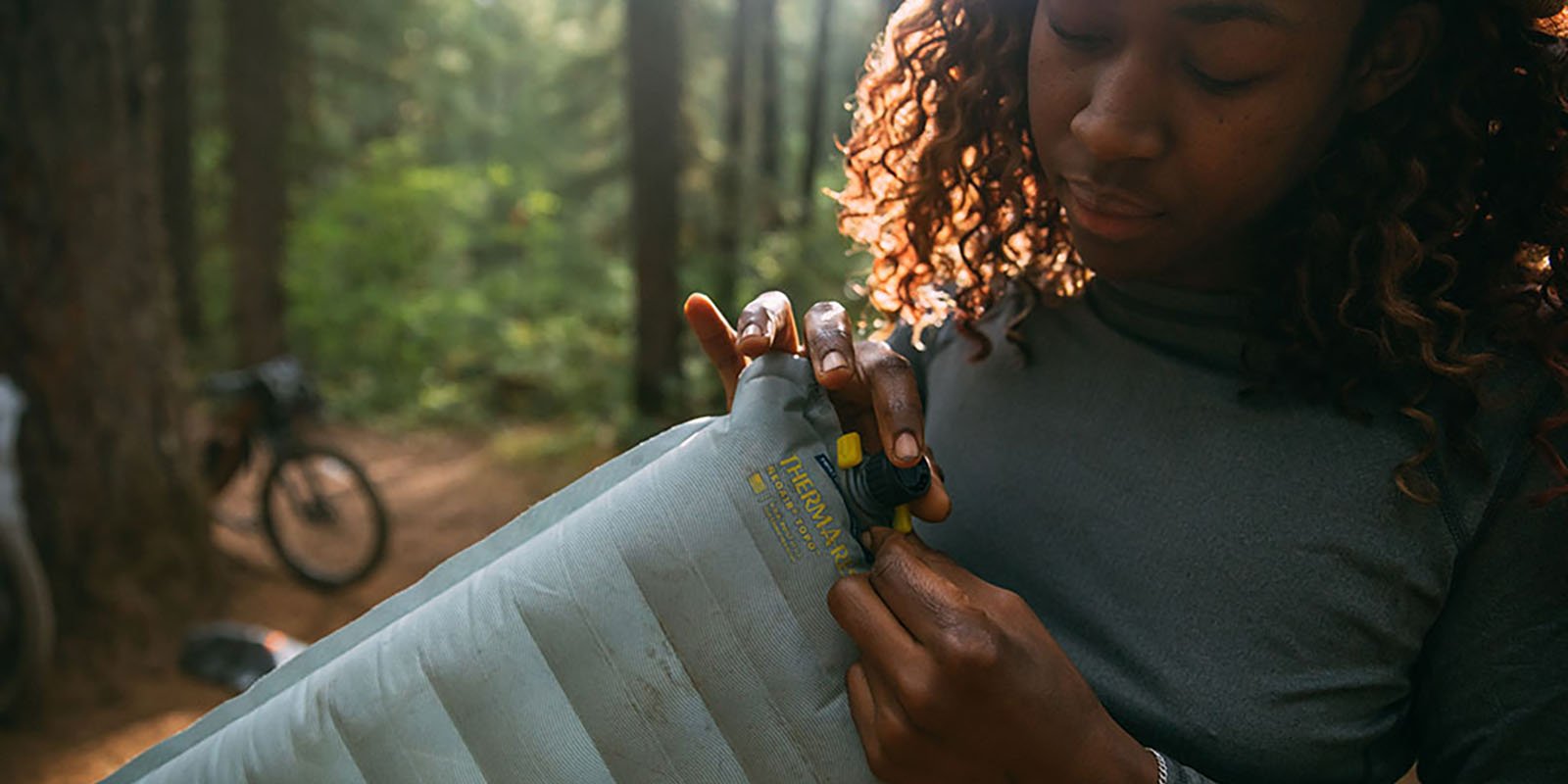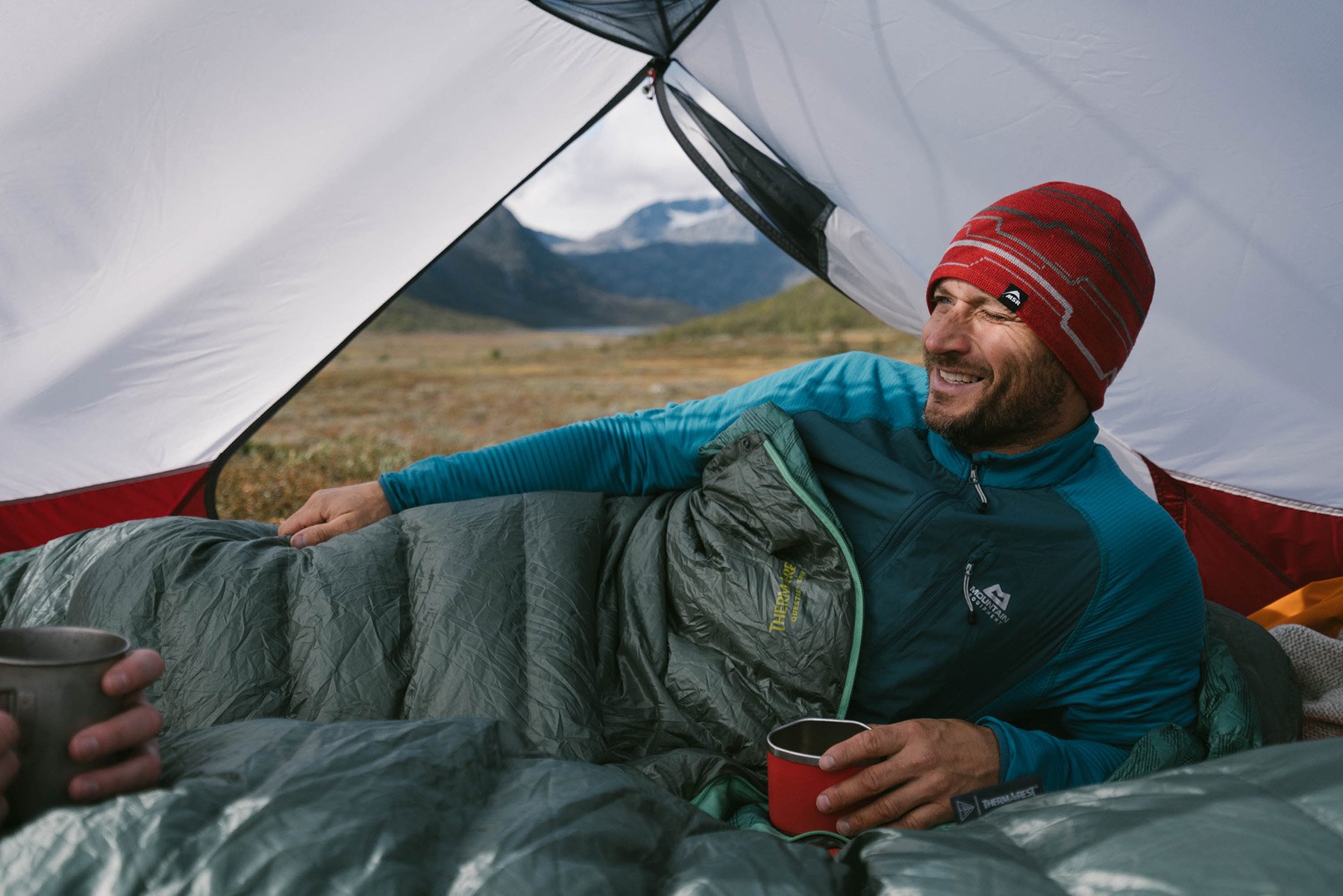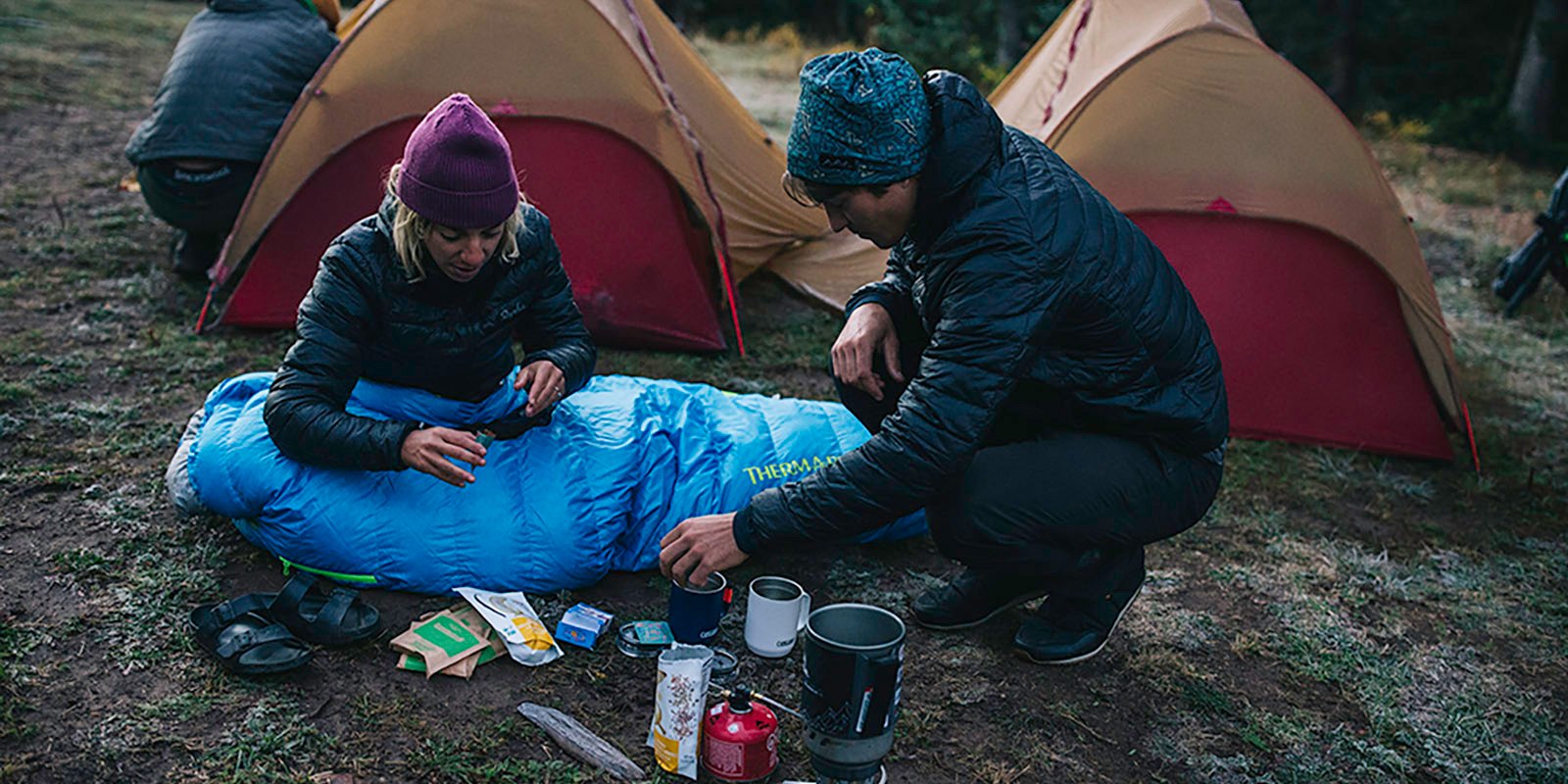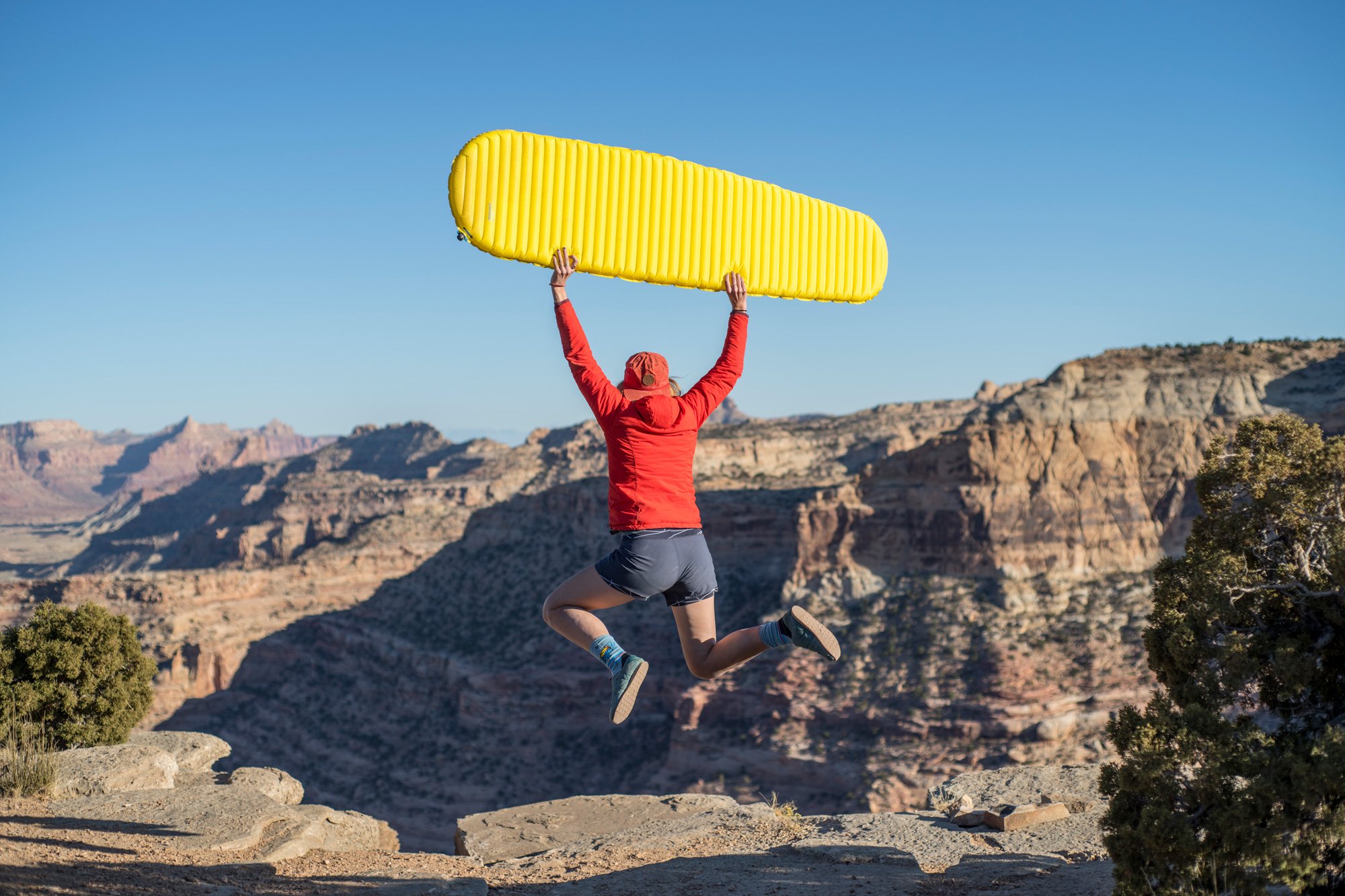When we think about camping, there are so many things that are deemed important that we may not think about in day-to-day life. Things like access to water, sufficient fuel for camping, first-aid, etc. However, the one thing that remains centrally important—whether you are laboring away mid-workweek or knocking off trail miles deep in the wilderness—is good sleep. That is why your camping sleep system is such an important set of gear.
Not everybody is the same type of sleeper. It is a highly personalized act. Some sleep warm, some cold. Some sleep curled up on their sides, some sprawled on their backs. If you’re like many, you tend to work a myriad of positions throughout the night. As manufacturers of top-quality camping sleep systems, we take pride in crafting diverse and high-performance gear to accommodate any type of sleeper. We want everyone to be able to experience the wonders of being in nature and we know good rest is key to that experience.
Things to Consider When Building Your Own Camping Sleep System
First off let’s define what a sleep system is. In a previous blog post, How to Build a Sleep System, we defined a sleep system as: “the sum total performance of the things you use to achieve a good night’s rest outdoors. It can be broken down into three component categories: Sleeping Bags, Sleeping Pads and Pillows.” There’s a lot of good information in that blog exploring those three categories. Here we will focus more specifically on how those categories can be used to ideally match what type of sleeper you are.
The next thing to do is assess what type of sleeper you are. We don’t put forth any rigid categories, rather we urge you to be the expert on yourself. Questions to consider include:
- What are the characteristics of how you sleep?
- What prevents you from a good night’s sleep?
- What do you need to be comfortable?
- What does comfort mean to you?
Some people run hot, some run cold. As mentioned before, some need room to spread out and others are as still as a mummy in their sarcophagus. Some people need the comfort of a soft and lofty pillow, while others can bunch up a jacket and call it a good night. You know you best!
Thermal Efficiency in Camping Sleep Systems
The ideal camping sleep system will be thermally efficient for you. In other words, it will keep you at just the right temperature for the conditions that you are in. If you are backpacking, and have to carry all your gear into camp, efficiency takes on another dimension: weight. How light can you go and remain comfortable and thermally efficient?
Building a lightweight camping sleep system is an act of balance between weight and comfort. While it’s important remain light for easier walking all day, if you’re not getting good sleep, your whole trip is going to be less than ideal.
How Different Camping Sleep Systems Accommodate Different Types of Sleepers
Sleeping Bags & Quilts
One camping sleep system variable is Fit. This is particularly important in the selection of sleeping bags but comes into play for sleeping pads and pillows as well.
Sleeping Bag Fit
We explore sleeping bag fit in depth in our Choosing the Right Fit for Sleeping Bags blog post. The key thing to know is that we make our sleeping bags with three different fit profiles:
- Ultralight Fit
- Performance Fit
- W.A.R.M. Fit
W.A.R.M. stands for With Additional Room for Multiple positions. It’s not a perfect acronym, but it’s an accurate one. This fit that is featured on comfort conscious sleeping bags like the Questar™ series and Saros™ series. More internal width allows for a higher degree of freedom to move around. These bags are good for sleepers that require the feeling of spaciousness to be comfy, yet are still compact and light enough for carrying into the backcountry.
From there, our sleeping bags get narrower—and lighter and more compact. Performance fit strikes that balance between roomy comfort and ultralight characteristics, like being highly packable. Our Parsec™ series is a prime example of this fit. The Parsec 20F/-6C is one of our best-selling sleeping bags precisely because of this balance. You can never go wrong with versatility.
Ultralight Fit is for those who prioritize low weight and packability over comfort features. Our Hyperion™ series is all about weight savings. One way we accomplished that is by reducing the internal space. What you lack in space to move around you make up for with a lighter and smaller pack.
Temperature Ratings
Having a sleeping bag or quilt that is appropriately warm for the conditions at hand and the preferences of your body is key to thermal efficiency. In this blog post, we talk about temperature ratings in depth. It’s straightforward, and like most manufacturers, we make bags in different ranges of temperature ratings to accommodate your needs.
Ventilation
Sleepers that run hot benefit from a sleep system keeps that effectively ventilates to keep them cool. Any one of our bags can accomplish this by adjusting the zipper. However, if ventilation is an important comfort criterion, you may want to try out a quilt.
Like our sleeping bags, we make wider more comfort focused quilts, and narrower more ultralight quilts. Quilts are excellent ways to give yourself freedom to move around, ventilate and stay thermally efficient—particularly in warmer temperatures.
Remember: If you are using a quilt, a sheet for your pad both adds comfort and protects your pad from absorbing dirt and body oils, which can affect its longevity.
Sleeping Pads
Sleeping Pad Fit
Sleeping pad fit is determined by its length, width, and shape. We generally make pads in two sizes: Regular and Large. In some models we offer a Small, which is often called a ¾ pad and used as a weight savings technique.
Regular pad dimensions: 72 in x 20 in (183 cm x 51 cm)
Large pad dimensions: 77 in x 25 in (196 cm x 64 cm)
Our pads come one or two different shapes, depending on the model: the tapered mummy shape and the rectangle shape. If you move around a lot at night, maybe the extra width of a Large mummy pad is sufficient to accommodate you. Alternatively, you can leave no doubt and grab a Large rectangular pad, like the NeoAir® Topo™.
Sleeping Pad R-value
R-value is a measure of how much a sleeping pad insulates you from the cold ground—the higher the number the warmer it is. If you are a cold sleeper, you might benefit from picking a pad with a higher R-value for your camping sleep system.
For example, the NeoAior® XTherm NXT is the warmest air pad that we make, and the top choice for mountaineers and frigid expeditions. Yet, we see a lot of backpackers carry it year-round for the assured warmth (and added durability).
To make it easy, we ranked all of our sleeping pads in order of R-value here.
Thickness
The thickness of a sleeping pad is a key comfort indicator for a great deal of sleepers. Especially side sleepers. Some people can be perfectly comfortable on a 1-inch thick pad like the classic ProLite™. If you are a side sleeper however, there’s a good chance 1 inch won’t quite cut it and your hips will feel it in the morning.
The iconic XLite NXT is 3 inches thick, which offers ample loft and cushion for even the boniest of hips. It’s combination of comfort in a well-insulated and lightweight profile make the XLite NXT one of the most popular choices for backcountry sleep systems in the world.
Yet, can you ever bee too comfortable? Why stop at 2.5 inches? The Topo™ Luxe is the thickest air pad we make and enables you to bring a blissful 4 inches of stable loft into the backcountry. If you’re car camping and weight is of no issue, it doesn’t get more comfortable than the MondoKing™ 3D.
Pillows
We offer two classes of pillow: air pillows and foam pillows. Generally speaking, air pillows are lighter and more compact and our foam pillow model—the Compressible Pillow Cinch—is comfier.
The Compressible Pillow Cinch is stuffed with upcycled sleeping pad foam bits and comes in a range of sizes to accommodate your comfort preferences. While not as compact as an air pillow it’s no slouch and compresses up tight and small for convenient packing.
We have three air pillow models:
- The Air Head™ Lite: the lightest and most compact.
- The Air Head™ Down: The warmest with a plush down-filled cover.
- The Air Head™: Like the Air Head Down but with a soft polyester cover.
All of our Air Head pillows come in multiple sizes to accommodate preferences.
Now that you know how the gear we make can be mixed and matched to perfect a personalized camping sleep system, share a sleep system accessory you can’t live without in the comments below!
Related Posts:
- How To Build A Sleep System
- How to Build Your Car Camping Sleep System
- How to Build a Summer Backpacking Sleep System
Updated. Originally Published July 14, 2022.
